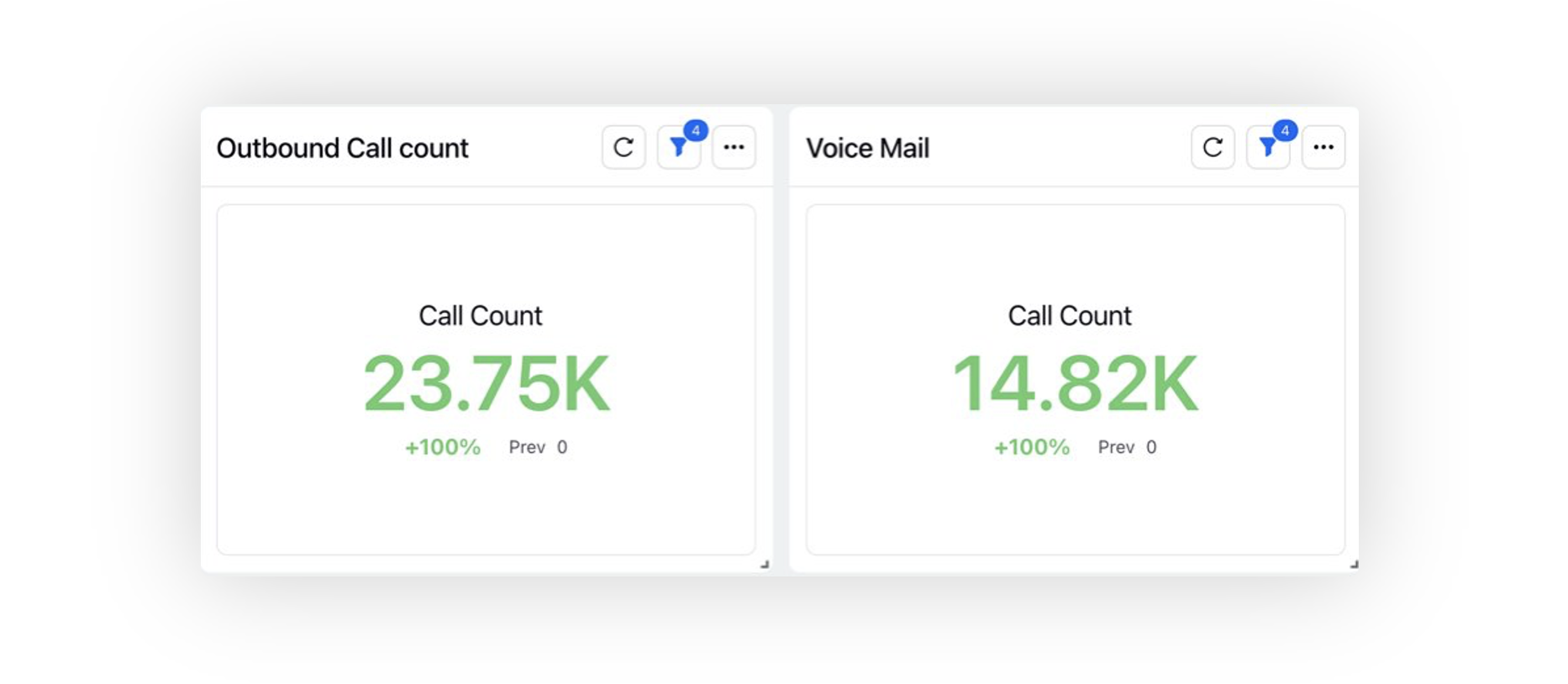Voicemail/Answering Machine Detection for Dialer Calls
Updated
Answering Machine Detection (AMD) is a technology used in telecommunications to identify whether a call has been answered by a human or a machine, such as an answering machine or voicemail system. This technology plays a crucial role in optimizing communication strategies by determining the appropriate actions to take after a call attempt, based on whether a human or a voicemail system has answered.
This strategic enhancement not only prevents agents from being sidetracked by voicemail calls but also leverages call categorization insights such as "Switched off," "Client No Answer," and "Client Reject." This empowers businesses to fine-tune their communication strategies, supercharging agent efficiency.
Enablement Note: To learn more about getting this capability enabled, please work with your Success Manager. Use this DP: VOICE_MAIL_CATEGORY_PREDICTION_ENABLED boolean DP at the partner level |
How AMD Works
AMD operates by analyzing various audio cues and call metadata to make an informed decision about the nature of the response to a call attempt:
Audio Patterns: AMD algorithms listen for specific audio patterns that are characteristic of human speech or recorded messages commonly found in voicemail systems.
Silence Detection: The system can detect extended periods of silence, which might indicate that a call has been answered by an automated voicemail system.
Benefits of AMD
Optimized Call Handling: AMD helps in routing calls to appropriate agents or systems based on the detected response, ensuring efficient resource utilization.
Personalization: Calls can be tailored differently based on whether a human or a voicemail system answers, enhancing the user experience.
Reduced Costs: AMD reduces the time agents spend on unsuccessful calls, leading to cost savings.
Improved Contact Rates: By avoiding calls to voicemail systems and targeting human responses, contact rates can be improved.
Voicemail Classification Based on AMD
Voicemails are classified into distinct categories using information from AMD and telco events:
Flight Mode: If no 180 event is registered, it suggests that the recipient's phone might be in flight mode or switched off, leading to the classification of a "Flight Mode" voicemail.
No Answer: When a 180 event is detected, and the time between the 180 and 181 events exceeds a set threshold (often around 25 seconds), the voicemail is categorized as "No Answer."
Reject: A 180 event with a time difference between the 180 and 181 events within the operator's threshold indicates a "Reject" voicemail, implying that the recipient declined the call.
Configuration
Activating Answering Machine Detection is very easy—simply select the 'Enable Answering Machine Detection' checkbox when setting up your campaign.
Note: This functionality works with Ozonetel, Signalwire and Sprinklr VoiceConnect as of now.
Once a call connects, Sprinklr's advanced algorithm swiftly springs into action, analyzing the response. While a genuine human interaction might open with a warm "Hello," automated systems often kick off with standard recorded prompts. Thanks to our vast collection of recordings and state-of-the-art training, Sprinklr's exclusive technology can ascertain in an instant if you're communicating with a person or a machine, guaranteeing the most effective and engaging call direction.

Select the Enable AMD using Early Media checkbox to improve AMD accuracy for outbound calls. Presently, voicemail messages played during the early media phase remain undetected, affecting AMD's reliability. By enabling early media transmission, voicemail messages played during the call's ringing stage can be detected, thus enhancing the overall effectiveness of call analytics.
Reporting
If voicemail is detected then the outcome will be visible in Conversation Completion Status.
The time it took to detect voicemail can be plotted in reports using AMD Time Taken (Predictive).
